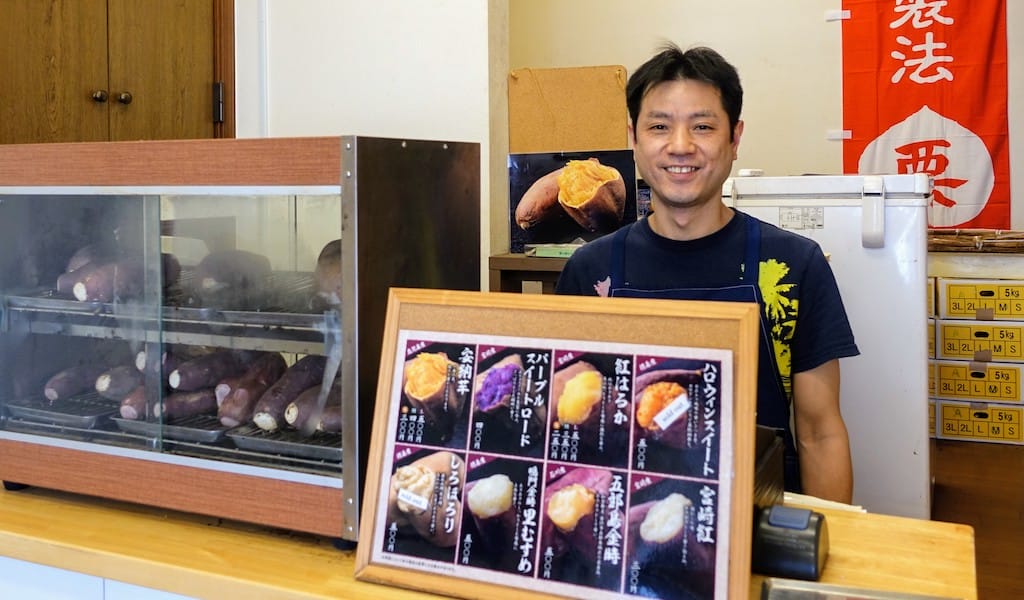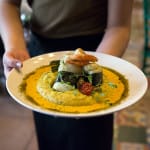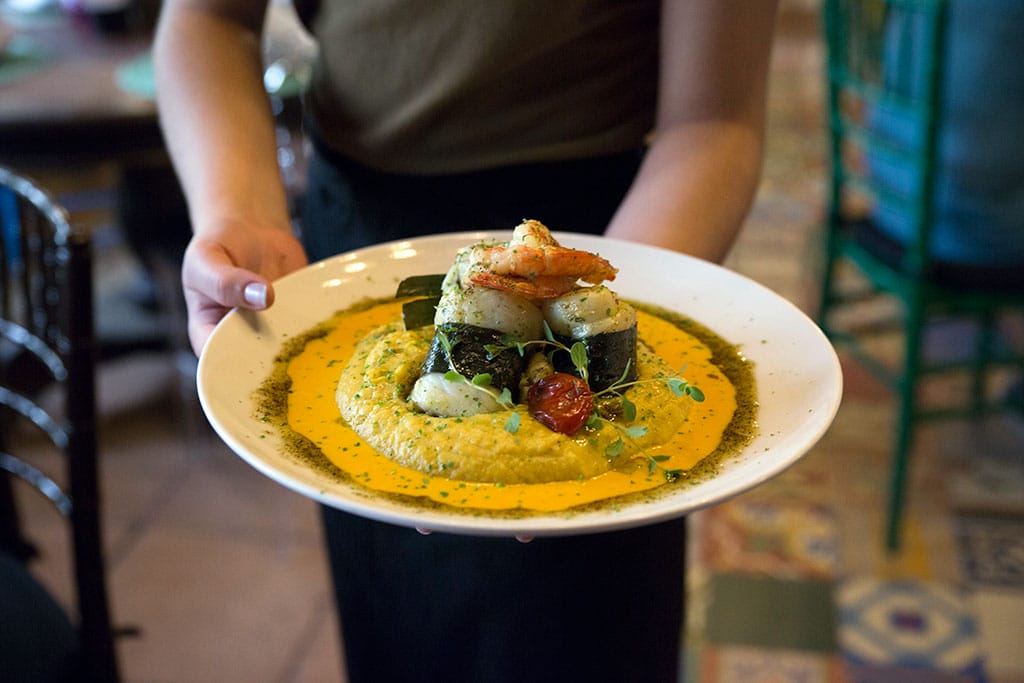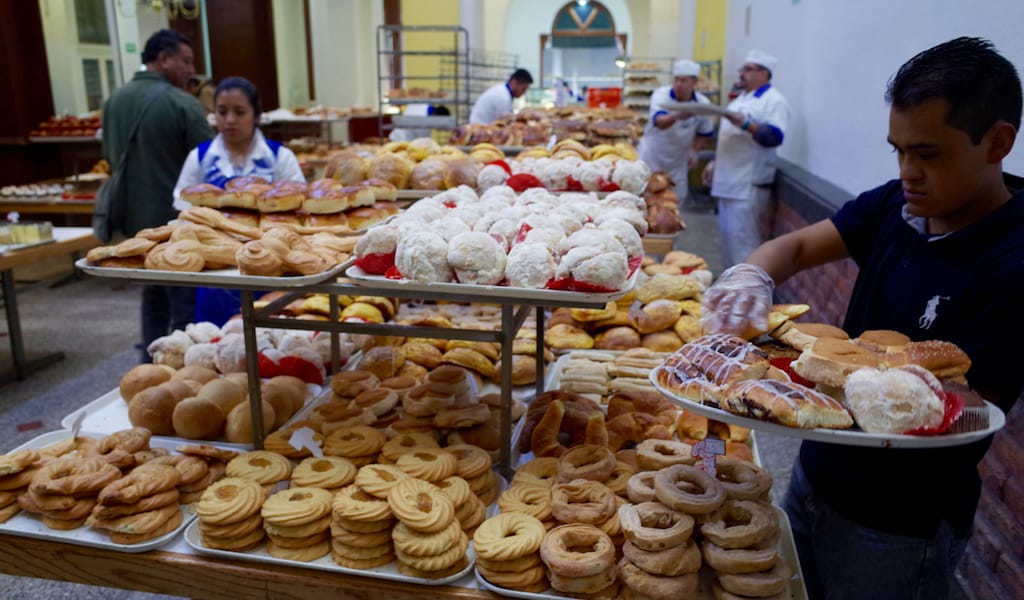Sweet, fluffy and incredibly habit forming, yakiimo (roasted sweet potatoes) are an autumnal treat loved throughout Japan. But in a small corner of Setagaya, Tokyo’s largest ward, a dedicated shop bakes them year-round. Kept busy by a steady stream of visitors, all clutching tell-tale paper bags, Fuji has a national take on a traditional snack.
The slow-baked yakiimo are often sold from slow-moving mini trucks equipped with onboard wood-burning ovens. As the trucks roll by, they fill the air with both a comforting smell and familiar song. Roasted on a bed of stones, the potatoes are commonly known as ishiyaki imo and once saved Japan from famine when rice crops failed in the 18th century. Served without butter or salt, it may seem a little simple to the untrained eye, but cooked right, the flavor and texture render any additions entirely obsolete.
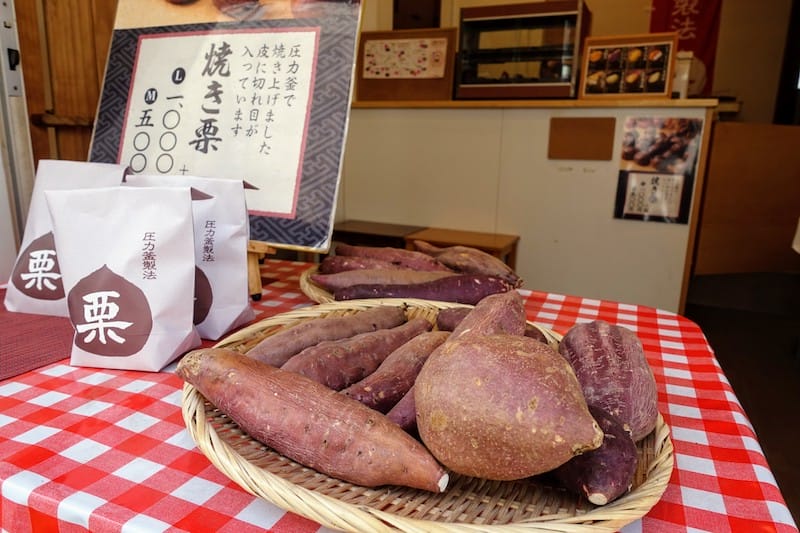
“At first, I only knew about Ano-imo,” says Fuji’s owner Uehara-san about the yellow-centered sweet potato typically sold at yakiimo stands. “But I did some research and found there were plenty of other varieties to try too.” Once a salaryman in Tokyo, Uehara gave up the long hours and bright lights of city work to open his own small business in 2013. A modest shop with a few seats for those who can’t wait to tuck in, he sources sweet potatoes from across the country. Selected from prefectures as far apart as Miyazaki, Tokushima and Kanazawa, they fill the counter’s modest warmer alongside a host of other pleasingly misshapen neighbors. Despite looking deceptively similar, each variety has been selected for their unique qualities.
The eye-catching Purple Sweet Road, Uehara tells us, is popular with those seeking healthier options, as it is loaded with polyphenols – micronutrients believed to aid digestion, among other benefits. For a softer, almost pumpkin-like flavor, the Halloween Suite is a new option full of carotene – great for those looking to give their skin a boost while indulging in a delightful snack. The traditional option is still the Anno-imo though, brought in from Kagoshima prefecture for its surprisingly creamy texture. Offering not only a wide variety of options, the shop in supply year-round too, and is a quiet success with a loyal following.
Choosing only to use naturally grown, Japanese varieties of sweet potatoes, Uehara’s year revolves around the harvest cycle. “We pick them starting in autumn and our supply slowly decreases over the year,” he explains. “In the summer, I might have just one or two options, but when autumn comes around again, I get them all.” Rather than opting for the modern convenience of forced-harvests or imported vegetables, the shop retains its focus on Japanese produce at its best.
Served without butter or salt, yakiimo may seem a little simple to the untrained eye, but cooked right, the flavor and texture render any additions entirely obsolete.
The seasonal eating habits of Japanese culture affect the number of customers craving warm sweet potatoes throughout the year, too. Uehara notes: “Japanese people like to eat them during winter. There’s usually a long line when it’s cold. When the temperature goes over 20 degrees [Celsius], I notice a big drop in customers. In winter, I roast around 400 a day. In spring, I only need around a hundred.” However, as we talk on a sunny April afternoon, the steady trickle of customers reassures us that the temptation of an old favorite will always appeal. Able to relax a little more, he chats with newcomers about which yakiimo variety to try (always advising to go for the classic Anno, but he tempts us with the healthy-twist of the bright Purple Sweet Road).
When it comes to baking, Uehara explains how he must adapt the process as the potatoes age – a skill that he’s tried and tested over time, changing with each batch. “The ones that I bake in the summer are faster,” he says. “In the winter, I bake them longer so they’re softer, but it’s anywhere from an hour to an hour and a half.” As we take a bite, we can tell the practice has paid off. Sweet and soft, the skin offers the perfect amount of resistance, giving way to the buttery flesh within.
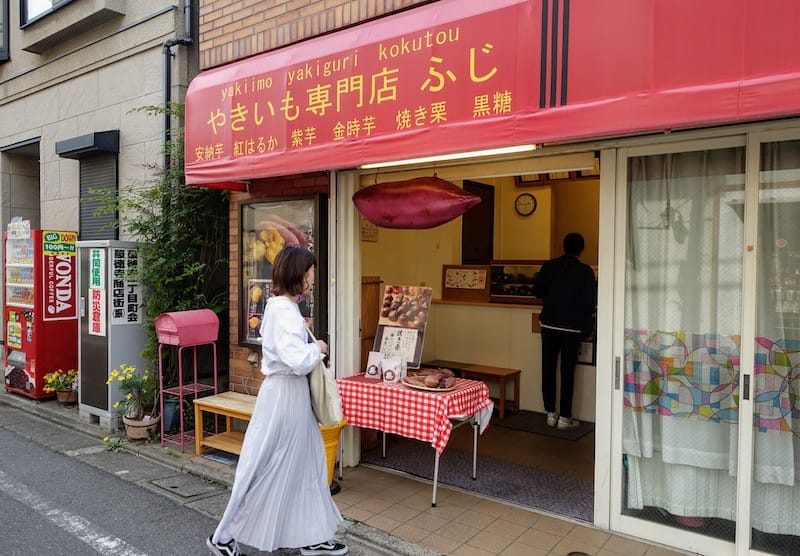
In a wooden box beside the counter, we notice raw sweet potatoes available for 100 yen each, which seems like a great opportunity for some home baking. Although, in a country where small kitchens means there are few real ovens, this can be tricky. “Some people bake this in the microwave,” Uehara says, “but the flavors don’t come out quite the same. You have to bake it properly. If you don’t have an oven, you can steam it – just don’t boil it!” Picking up a couple for ourselves, we reassure him they’ll never see the inside of a bubbling pan.
Easily spotted in the quiet neighborhood, Fuji’s red eaves are found on the route to the famous maneki-neko (beconing cat) temple, Gotokuji. Mixing Swedish bakeries, third-wave coffee shops and retro-sento (bath houses) with Fuji-adorned walls, the neighborhood strikes the perfect balance between old and new. As you stroll towards the well-known temple, passing aged locals with vegetable-laden bags and dapper students stopping for coffee, it’s easy to see how the Fuji stand fits in. Combining the older-generation’s love for simple, traditional staples and the younger crowd’s love of anything inspiring feelings of natsukashii (a fond nostalgia), the offering of unusual varieties of sweet potatoes is the icing on the cake. Providing a chance to eat a food so comfortingly familiar with a new twist, Fuji has created something truly special out of something so simple.
Lily Crossley-BaxterLily Crossley-Baxter
Published on June 28, 2019
Related stories
December 29, 2015
RioEditor's note: As Rio gears up for the 2016 Summer Olympics, CB has been exploring the backstreets of the city's Olympic Zones in search of gold-medal eateries. This is the first dispatch in the series. Barra da Tijuca was meant to be the best of Rio without its worst. Sandy beaches with no pickpockets. Top-notch…
August 26, 2021
Mexico CityBlack ice cream is not an easy sell, but Jose Luis Cervantes, AKA Joe Gelato, is a persuasive guy. It’s not just his million-dollar smile or easygoing nature, but also the passion that he clearly feels for his gelato. “Before I went to Italy, I knew about the concept of gelato,” says Jose, “but I…
July 15, 2018
Mexico CityA customer loads up a tray of traditional Mexican “Pan Dulce” at Pasteleria Ideal, a classic bakery in the heart of Mexico City’s Centro Historico.







































